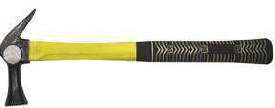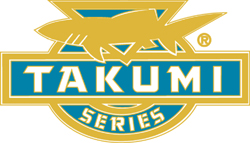A Shark That Eats Wood

In my search for high quality
products to be used in boat building, I found the answer to
the handsaw dilemma. I heard of a saw that you could bend against
the surface of wood, and it would cut the end of the dowel flush
against the wood without harming the wood surface. So I ordered
one of them and another interesting saw made by Shark
Corp, the same manufacturer. When they arrived,
I tested them immediately against all of the pull and push saws
I use for trim work and cutting. They produced a very thin kerf
and cut like demons into any type of wood and even plastic PVC
pipe. Inside the shipment was a small catalog with a wide selection
of saws and other building implements. I had to write about
these super sharp building implements to let our community know
of them.
I emailed the company, and a
day later the owner of the company, Mr. Nakayama, called me
personally. I found out that Mr. Nakayama actually quality checks
the saw teeth to make sure they are razor sharp. Any necessary
corrections to the teeth are manually adjusted by him. I asked
for a sample from his many products to review, and he gladly
sent them to me to test.
A small number of days passed
before the UPS man delivered the samples to my door. In the
long box I found an assortment of the finest saws (instruments)
on the face of the planet.
I found the extremely sharp 10-2440 saw, shown
here.

cross tpi-17 rip tpi-9 blade length-9 ½”
Also in the box was the extremely
thin and sharp 10-2410 with a kerf of only 0.004”. for
super smooth fine cuts. It has a rib to support its ultra thin
blade.

cross tpi-19 blade-10 5/8”
Along with that fine saw was
a #21-2220 pry bar/nail puller. It has an exquisitely thin flat
pry section that can fit behind the thinnest battens or trim
and release them without a scratch.
It can also pull the most stubborn
nails - even nails set with a nail gun! This style pry bar comes
in two sizes, an 8” like I received and a 10” version.
They also make a large assortment of strictly nail pullers from
6 ¼” to 14 1/8” that are the best I have
ever seen.
They have duck head hammers with fascinating characteristics.
There is a cat’s paw claws like a nail puller and highbrow
rocker design. They also have a built in nail set, three striking
surfaces that can side strike or strike with the elongated head
to keep the nail penetrating after the first point of impact.
Common hammers have a very small sweet spot but the Shark
Duck Head Hammer uses the entire head as the sweet
spot making nail driving a sheer pleasure. They come in three
sizes with or without a milled head (shown is the smallest version).

They even make yard tools that still have the
same custom made quality that all of Shark Corp.
tools have.
I see I have gone off track again! Back to the
contents of the shipped box. Now comes the best part. In the
same box were the Takumi tools.

“TAKUMI” is the name given
to only the master craftsmen in ancient Japan to honor their
superior work.
These instruments are named after
the fine craftsmen who built huge and elaborate castles and
shrines using no nails. They used mortises, tongue and groove
joinery, wooden dowels and wedges to build these national monuments.
After centuries of use, these same monuments are still standing.
The foundation of this carpentry work was the pull saw. Since
the Empire is a series of Islands, the Japanese built rowing
and sailing craft. The finish of these craft is legendary. All
of this was made possible by the invention of the pull saw,
the same type of saw being sold under the “TAKUMI”
name.

These saws are the premium line
of Shark Saws. I used the standard
saws that came in the box until I knew how to cut with these
different types of saws. It requires long even strokes without
forcing or jerking. The “TAKUMI”
saws have even finer blades that are hollow ground from front
to back and across the saw.
You must remember that fine craftsmen have been
forging this special steel for centuries, and building a fine
saw such as the “TAKUMI” must be done by a trained
skilled artist. The steel is hammered, then rolled over upon
itself hundreds of times until it becomes perfect. This is the
same type of steel used in the famous “SAMURAI SWORDS”.
I was so impressed when I took the first saw
from its package; it was the RYOBA
model 10-2710.

cross tpi-20 rip-graduated. blade length-81/4”
overall-22” kerf-0.020
From the tightly wrapped bamboo skin handle to
the ultra sharp impulse hardened steel teeth, I knew this was
a saw of unequaled performance. When I first cut into the Red
Oak it felt wonderful because you don’t bear down. You
just let the saw glide through the wood at an extremely fast
rate. It was as if I were cutting butter and the cut itself
needed no sanding; it was that smooth. I then used the other
side of the saw to rip cut the same Red Oak. From that moment
on, I knew these Takumi saws would have their own section in
my tool crib alongside my finest measuring tools, because they
were far and above everyday common tools.
The next saw was the DOZUKI
super fine crosscut saw with 26 tpi and a kerf of only .015
. It is the finest most delicate saw of the “TAKUMI”
saw line.

cross tpi-26 blade length-9” overall
length-23 ¾”
super fine kerf-0.015”
It also uses a rib to help keep the ultra thin
hollow ground blade from bending. It can be used for the most
precise work any craftsman can do. I have cut an ultra thin
slice from red oak that you could actually see through. I showed
my wife and she was amazed! It will cut dovetails and mortising
far superior to any machine cut. I find when I mark a pencil
line on the wood, I can actually split that line with this instrument.
It also cuts effortlessly through any type of hardwood. I have
never used a finer saw.
I also have an AZEBIKI
saw from the “TAKUMI”
line. This strange looking saw is for cutting a hole inside
a panel without starting from the outside.

cross tpi-15 rip tpi-9 blade length-3 ½”
overall length-17 ½” kerf-0.043”
Like all the other saws in this line it is ultra
sharp. How sharp is ultra sharp? Well it is sharper than a fart
and a fart can cut through clothes without making a hole! All
kidding aside, the saws I have tested have no peers. The AZEBIKI
saw performed better than I anticipated and I mastered starting
the hole with this saw in no time at all. It has a crosscut
side and a ripcut side on the extended blade.
One thing I must say is that these saws are so
well balanced that they seem to become part of your arm and
hand. The feeling is so natural that after using them you come
to expect it from other tools, but they fail to give that same
feeling. I wish I had discovered these saws when I was 20 instead
of now. All the houses and boats I have built would have been
much easier with these saws. Now that I am fifty-one and have
a bad back, I can see that I am too soon old and too late smart.
Another saw in the “TAKUMI”
lineup is the Kataba, a general carpentry
saw with crosscut pattern teeth at 17tpi. It is designed for
fast cutting through plywood, particleboard and dimensional
lumber. With its ultra fine kerf and fast cutting ability, it
could replace a power saw if noise were a concern. It is not
meant for fine cutting like dovetails or delicate finish work.

cross-17 tpi blade length12”
overall length-25 ½” kerf-0.039”
The next two “TAKUMI”
saws are RYOBA stilled saws which
means they have two sets of teeth, cross cutting and ripping
teeth.
The first is the10-2720.

cross-17 tpi rip-graduated blade length-9”
overall length-23” kerf-0.025
The next saw is the 10-2730 and the blades get
larger and have courser teeth as the number grows. Some day
I will have a whole set of these wonderful master craftsman
built saws.

Cross: 10 tpi rip-graduated; Blade Length:
10 ¼”;
Overall Length: 23 ¾” Kerf: 0.015”
The last saw in this series is made to cut off
dowels completely flush with the surface of the wood the dowel
is placed in. The teeth have no set to scratch the surface of
the wood but the saw slices right through the dowel wood. With
its special spring steel the saw is bent to make the cut like
a bow. No finer steel can be found in the world than is in these
saws. This saw is the KUGIHIKI #10-2810
and should not be used for cutting thick material.

Cross: 24 tpi; Blade length: 6 ¾”
Kerf: 0.014
Now you have seen the finest saws made. I urge
you all to find a place in your toolbox to put one of these
exceptional saws.
Shark Corp. makes all types of products and each
is made with the finest materials. May I suggest buying the
smaller inexpensive specialty saw like its “TAKUMI”
cousins. This saw is the Dowel/Dovetail/Detail Saw #10-2204

cross 26 tpi blade length -6 ½”
I bought this saw on amazon.com, and it got me
interested in these fine saws. Now hopefully Chuck will be able
to sell them in his online store. My only wish is that Shark
Corp. would make a line of chisels to match their super high
quality traditional saws.
From John’s tool crib straight to you,
John

